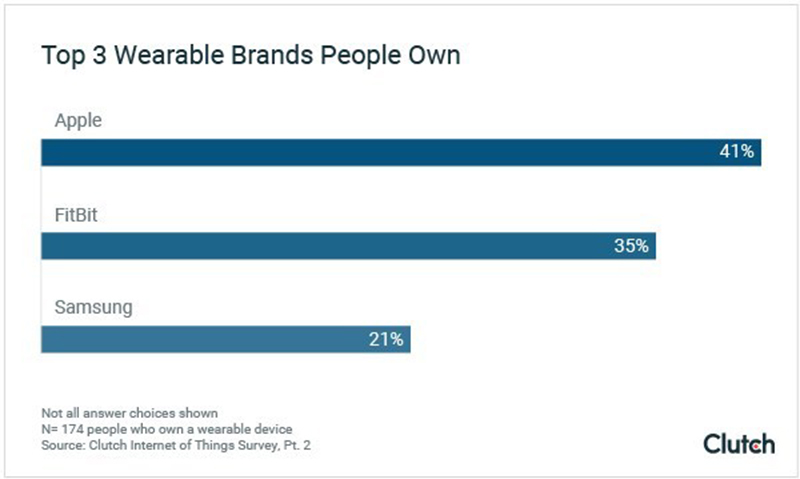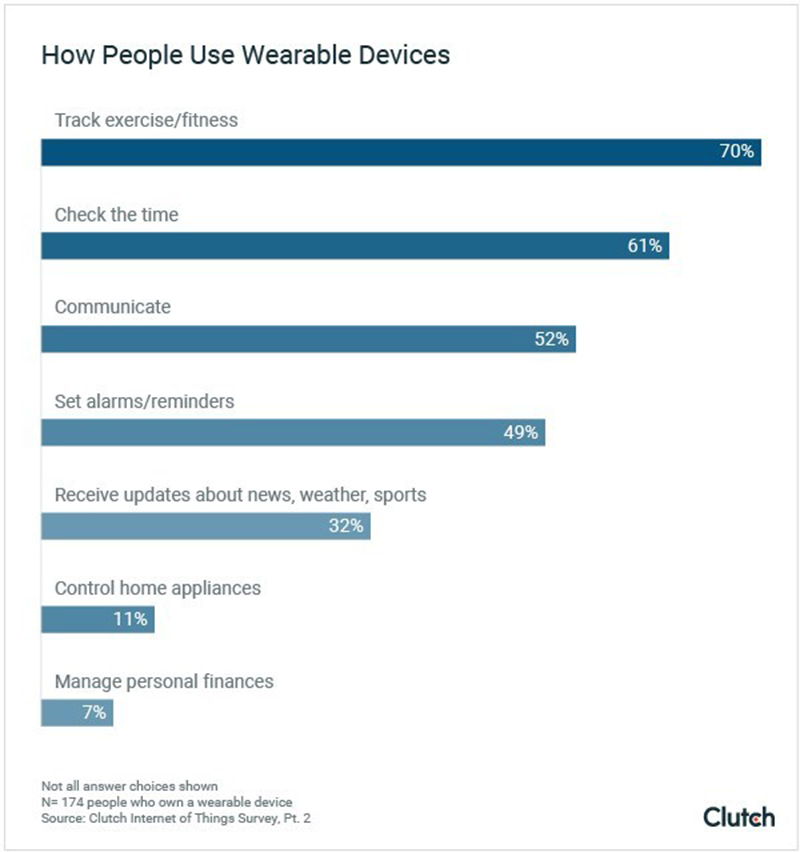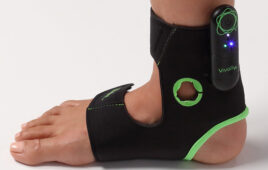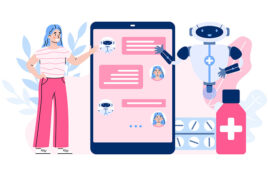According to new research from Clutch, Apple is the most popular brand of wearable devices. At 41 percent, Apple Watch is the wearable device that the most people own, ahead of FitBit (35 percent) and Samsung (21 percent) devices.
Of people who own wearables primarily 61 percent own smartwatches, which explains the popularity of the Apple Watch relative to other fitness trackers at 27 percent.
According to Pavlo Bashmakov, director of augmented reality and mixed reality lab for Intellectsoft, some of the advantages Apple has over other competitors in the wearable space include:
- Expansive platform for developers
- Application market that is familiar to customers
- Existing Apple customers
- Reputation as a luxury brand

Apple is the most popular brand for wearable devices, according to a consumer IoT survey by Clutch.
People Use Wearables to Track Fitness, Check Time
People commonly use their wearable devices to track fitness approximately 70 percent of the time, and check the time using their wearable 61 percent of the time. Over half (52 percent) use them to communicate.
People buy wearables specifically to accomplish these low-complexity tasks, according to Rob Pope, chief technology officer and co-founder of Dogtown Media, a mobile app development company based in Venice Beach, Calif.
This explains why wearable devices (35 percent) are the second-most commonly owned IoT devices, behind smart home appliances (67 percent). People may purchase a smart home appliance without realizing it is a connected device.

People use wearables to track health and fitness the most, according to new survey results from Clutch.
Three Barriers Prevent Users From Completing Complex Tasks On Wearable Devices
Wearables owners do not use their devices to accomplish advanced tasks such as controlling home appliances or managing finances. This is a result of three main factors:
- Screen size: Small screens limit the functionality of wearable devices since complex tasks require people to scroll through multiple screens.
- Ease of Use: Tasks such as money or data transfers are easier to accomplish manually or using a desktop or mobile interface.
- Privacy: Data sharing concerns prevent people from accessing personal or sensitive information on their wearable devices. Half of wearables owners (50 percent) believe that their personal data is shared across multiple connected devices.
People Tend Not to Connect Their Wearables to Other IoT Devices
Some complex tasks require people to download the same applications on their wearable as on another IoT device. For example, to control a smart refrigerator using a wearable device, it’s necessary to download the application on a wearable or smartphone.
Only 6 percent of people who own wearable devices connect them to the same applications as other IoT devices. This indicates people have little interest in using wearable devices as part of the internet of things (IoT) – a system of devices that people can control remotely when connected to the internet.
Instead, wearable owners connect their devices to their smartphones. Over 90 percent access the same applications on their smartphones as their wearable device.




